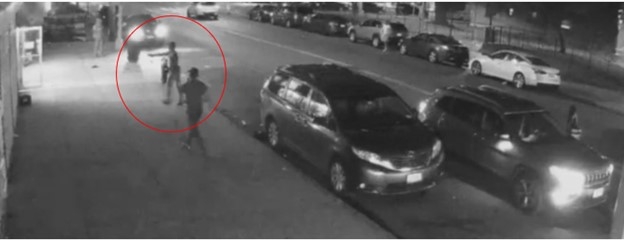
State is Surveying School Districts and Boards of Cooperative Educational Services on Test Kits and Masks Needs
Governor Hochul Advises Schools to Follow CDC Guidance Amid Reports of New Variant and Rise in Cases This Summer
As students return to school this week, Governor Kathy Hochul today announced that New York State is making COVID-19 rapid test kits and masks available to school districts and Boards of Cooperative Educational Services by request. This comes amid reports of the new BA.2.86 variant and following a rise in COVID-19 cases and hospitalizations this summer. Governor Hochul is also advising schools to follow CDC guidance to help protect students in the classroom.
“Thanks to the hard work of New York schools, teachers, and parents, we have come a long way to ensure students can safely return to the classroom,” Governor Hochul said. “Frequent testing for COVID-19 is an important part of keeping our kids safe and preventing an outbreak, and I will continue working to ensure our school districts have the resources they need to provide a safe, in-person learning environment for our students.”
This week, the State will conduct outreach to the State Education Department and Boards of Cooperative Educational Services (BOCES) to survey needs for test kits and masks. After the requests have been submitted, New York State will deliver the requested tests and N-95 and KN-95 masks to each BOCES for distribution to school districts.
Additionally, Governor Hochul and the New York State Department of Health (DOH) recommend that schools review current CDC school guidance for COVID-19 prevention and work with their local health department to implement effective and feasible public health measures.
New York State Health Commissioner Dr. James McDonald said, “As we start the new school year, and once again see an uptick in COVID-19 across the State, I urge all students, teachers and parents to remember COVID tests are easy to use as well as highly accurate. Also know that COVID is a treatable disease. If you have symptoms, get tested. If you test positive, stay home and stay away from other people, especially those who are vulnerable to serious illness. And, to improve your chances of not having serious illness, speak with a health care provider about treatment. I thank Governor Hochul for working to provide school districts with critical resources to ensure that children have a successful and safe school year."
To prevent the spread of COVID-19, the CDC recommends schools:
- Promote vaccination and testing;
- Encourage students, teachers, and faculty to stay home if they are sick and exhibiting symptoms;
- Optimize ventilation and maintain improvements to indoor air quality to reduce the risk of germs and contaminants spreading through the air; and
- Teach and reinforce proper handwashing and hygiene practices.
Schools that experience outbreaks should work with their local health department for timely outbreak response support. More guidance for schools is available here.
With the new BA.2.86 variant now detected in New York, DOH and the Wadsworth Center will continue monitor the situation and track new variants to help keep New Yorkers safe. As a reminder, an updated COVID-19 vaccine tailored to guard against certain variants is expected to arrive in pharmacies and doctor’s offices this Fall.
All individuals who have symptoms of COVID-19 should immediately get tested. If a test is positive, consult a health care provider about whether treatment is necessary, as it's important to begin treatment, if needed, soon after the onset of symptoms to ensure the utmost effectiveness. Individuals who do not have a regular health care provider can find locations for treatment here. Those with COVID-19 should follow CDC guidance to avoid transmitting it to others, including isolating for 5 days after the onset of symptoms, as well as masking and avoiding contact with those who may be at higher risk of negative outcomes.
At-home tests are available at many local pharmacies statewide, and New York continues to make high-quality N-95 masks and test kits available to state and county officials by request. New Yorkers should contact their respective county health department or local emergency management office for more information.



